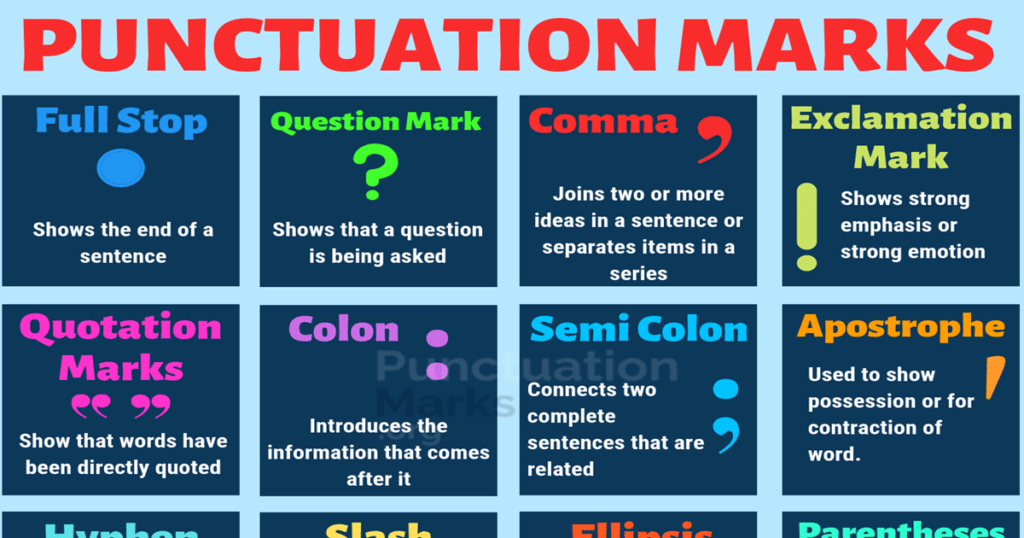Punctuation marks are essential in written language as they help convey meaning and ensure clarity in communication. Without proper punctuation, sentences can be confusing or difficult to understand. There are several punctuation marks in the English language, each serving a specific purpose.
From commas to periods, punctuation marks play a crucial role in structuring sentences and organizing ideas. Understanding the different punctuation marks and when to use them is key to becoming a proficient writer.
List of Punctuation Marks in English:
- Comma (,)
- Period (.)
- Question mark (?)
- Exclamation point (!)
- Colon (:)
- Semicolon (;)
- Quotation marks (” ” or ‘ ‘)
- Apostrophe (‘)
- Hyphen (-)
- Dash (—)
- Ellipsis (…)
- Parentheses ( )
- Brackets [ ]
- Slash (/)
- Ampersand (&)
- Em dash (—)
- En dash (–)
Commas are used to separate items in a list or to separate clauses in a sentence. Periods denote the end of a sentence, while question marks indicate a question. Exclamation points express strong emotion or emphasis. Colons are used before a list or explanation, while semicolons separate independent clauses.
Quotation marks are used to indicate direct speech or to enclose titles of works. Apostrophes show possession or contractions. Hyphens join words together, while dashes can indicate a break or interruption in a sentence. Ellipses are used to show omitted words or a pause in speech.
In conclusion, punctuation marks are essential tools in written language, helping to convey meaning and structure sentences effectively. By understanding the purpose of each punctuation mark and using them correctly, writers can communicate their ideas clearly and cohesively.
